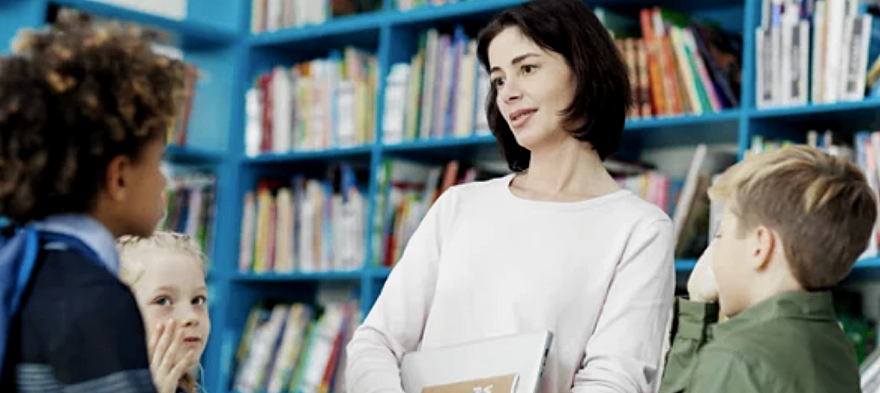
Mar 5, 2021 12:00:00 AM
When COVID-19 closed our schools almost a year ago, teachers—regardless of how many years we’d been in a classroom—suddenly became new teachers again. Distance learning was as unfamiliar to us as it was to our students and we had to find creative ways, quickly, to adapt our lessons to virtual platforms and keep our students engaged.
My colleagues at Boston Renaissance Charter Public School (K-6) and I have spent the past year reimagining our curriculum, finding out what worked for our students and what didn’t. But [pullquote position="right"]it was clear from the very beginning that social and emotional learning (SEL) had to be made a priority.[/pullquote] While SEL is an essential part of the curriculum every year, it’s become more important than ever in these uncertain times and must be prioritized at every level in our schools going forward.
There are so many ways to engage children in SEL, but one of our more successful strategies for our K-2 cohort involved pairing read-aloud literature with our SEL curriculum. We were able to support our students’ reading skills and connect on a personal level by incorporating meaningful books at each grade level. We pulled our reading list from Lee and Low’s selected fiction and nonfiction books organized by broad categories related to SEL—all of which help children learn valuable skills about themselves, others, and the world around them.
These skills include understanding ourselves and our abilities, using self-control, setting goals, maintaining positive relationships, having empathy for others, making positive decisions and others. [pullquote]Perhaps most important for our diverse student body, though, was the fact that all of the books on the SEL reading list featured protagonists from diverse backgrounds.[/pullquote] Our students could see themselves in the characters and relate to their circumstances.
Stories have an inherent power to teach when they have engaged listeners. When we read the text together as a class, we pause along the way to highlight the critical skills as they come up. For example,
Such stories increase students’ ability to understand the feelings of another person and how to interact with others in respectful and kind ways.
We set aside time after reading stories to consciously reflect on each topic, which not only deepens a story’s impact, but also leads to better comprehension and improved critical-thinking skills. [pullquote]Literature can teach students to recognize and manage their emotions, how to solve problems in a complicated situation, and how to practice self-care.[/pullquote]
In order to practice self-care, students need a safe space, one where they feel comfortable talking about their personal experiences or difficult emotions with people they trust. In our grade 3-6 cohort, we use Restorative Justice Circles to open a dialogue among students and teachers and build relationships. These circles offer all students an opportunity to participate in a dialogue, share personal experiences or make connections, without pressure to feel "right" or make a decision.
It looks a little different when we’re remote but it’s really met the moment over the past year. We have a set protocol for taking turns sharing your voice, or passing if you choose to. We also make time for mindfulness, meditation and deep breathing.
Teachers and staff aren’t immune from the stress and upheaval of the moment either. Our connection, empathy and support of one another is just as important as what we do for our students in this crisis. According to the National Child Traumatic Stress Network (NCTSN), it’s imperative that we also remember to practice self-care and connect in meaningful ways whether it's a virtual coffee break or lunch hour where we can check in with each other on how we’re feeling or even just talk about books we’re reading or shows we’re streaming. At Renaissance, we host a monthly game night for staff where we can unplug and have some fun. It’s necessary.
Finally, as educators and adults, we can lead by example. Our students are watching and listening to us, so when we practice self-care, we’re showing them how they can take care of themselves as well. Going forward, relationships will be essential in keeping kids engaged and connected. If we neglect to prioritize SEL in our curriculum today, we will be unequipped to meet the varied needs of all of our students in our post-pandemic future.
Christina Devonis is an SEL Coach for Grades 3-6 at Boston Renaissance Charter Public School.
The story you tell yourself about your own math ability tends to become true. This isn’t some Oprah aphorism about attracting what you want from the universe. Well, I guess it kind of is, but...
If you have a child with disabilities, you’re not alone: According to the latest data, over 7 million American schoolchildren — 14% of all students ages 3-21 — are classified as eligible for special...
The fight for educational equity has never been just about schools. The real North Star for this work is providing opportunities for each child to thrive into adulthood. This means that our advocacy...
Your donations support the voices who challenge decision makers to provide the learning opportunities all children need to thrive.
Ed Post is the flagship website platform of brightbeam, a 501(c3) network of education activists and influencers demanding a better education and a brighter future for every child.
© 2020–2024 brightbeam. All rights reserved.
Leave a Comment